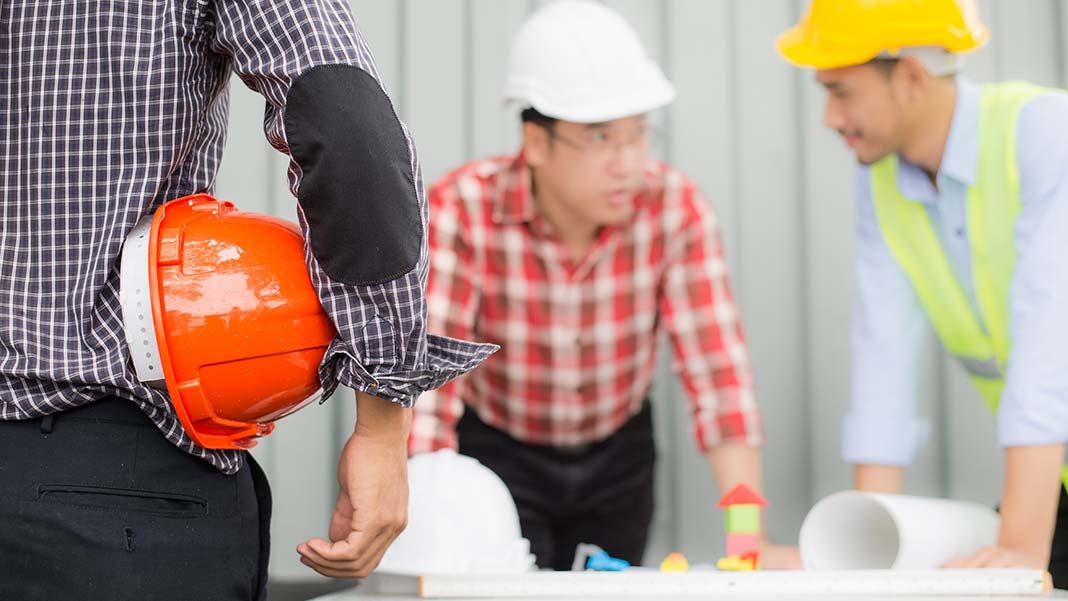Why Using Big Data Mitigates Risk and Helps Construction Businesses Take Flight
By: Redshift

Construction companies that adopt technology to accelerate delivery can achieve real efficiencies. But if they aren’t also gaining insight from the project data, they’re missing a major opportunity. It’s like building a better, more powerful jet engine, then never actually leaving the ground.
Digitizing all those construction documents creates a wealth of information, but most contractors don’t have time to spare for data analysis while juggling multiple projects. Machine-learning tools can automate the process, helping find the root causes of persistent problems. From quality issues to safety risks, companies can use big data to identify construction trends and drive better outcomes on future projects.
The companies I talk to say they need to reduce risk and build more predictability into their projects. If they can do that, they can be more productive and achieve better margins. Adopting construction-management technology is the first step toward managing risk. When all project-related documents are captured digitally—including things like change orders, requests for information (RFIs), submittals, and issue reports—significant information is amassed and grows significantly with each new project. Machine-learning tools look at the project data to find and report trends in quality and safety, then flag the risks. The more relevant the information put into the system, the more predictive the results.
The question is, are contractors ready to make that cultural shift—eschewing disconnected paper trails in favor of digitizing the process—and gain access to information about how their companies are doing across key performance indicators (KPIs)? Are they open to applying new technology to what has always been a manual process or switching to a new process altogether?
The reality is, contractors are already working hard to keep up with demanding schedules, especially when they don’t have the full workforce needed to fulfill the demand for construction projects. On one hand, they are slammed with work, and automation would alleviate some of the pressure on their workforce, introduce more predictability into their processes, and lower project risk. On the other hand, these companies don’t have time to stop and retool—the equivalent of changing that jet engine mid-flight. No general contractor is going to say, “I’m going to stop taking on new work while I put this digital process in place.”
Construction’s Major Cultural Shift
A decade ago, construction was near the bottom of the list of industries that had adopted technology in a significant way. It was a bad rap for the industry, but it also effectively threw down the gauntlet. There’s been a huge shift in the industry as construction companies realize that technology needs to be a core part of their business.
Construction isn’t just about the manual labor and equipment on the jobsite; technology is a valuable tool in a firm’s toolbox. That’s the mindset that wins jobs, drives productivity, and delivers better projects. It’s also the attitude the construction industry will need to adopt to meet the tremendous demand for buildings and infrastructure through 2040.
The companies that have successfully transitioned to automated processes have made a major cultural shift in their organizations. They’ve empowered expert teams to deploy technology wherever it will have the most impact. These teams look at the technology landscape and the existing processes, then introduce technology that can address a company’s specific challenges. It takes a dedicated effort.
One example of successful adaptation is Suffolk Construction, where a culture of innovation is driving a more predictable construction process with fewer mistakes. Executive Vice President and Chief Data Officer Jit Kee Chin takes the company’s technology strategy extremely seriously. Suffolk is ahead of the curve, using machine learning to analyze data, predict risk, and deliver better buildings.
Whether construction companies hire a chief data scientist, chief technology officer, or technology strategist, embracing technology means having someone on board who wakes up every morning wondering, “Okay, what are the challenges that we have as a business, and what are the technologies out there that could help us?”
Looking Beyond KPIs
Adopting construction technology doesn’t stop at automating construction management. Contractors are looking to technology to help deliver better outcomes across the board for their employees, the company, and their clients. It’s possible to amass enough information in just one to three years to predict the risk factors and make changes to improve performance on future projects.
To help manage risk as a general contractor, Swinerton uses the Autodesk BIM 360 Project IQ machine-learning engine to flag high-risk subcontractors—repeat offenders who have racked up more issues or made repeated mistakes. Limiting the company’s risk exposure can avoid the kinds of problems that create cost overruns and schedule delays. Combing through the data manually is not practical and would be unlikely to yield useful results. With machine-learning tools, it’s quick, and the accuracy improves as the tool gathers more data and learns over multiple projects.
If contractors use machine learning to benchmark KPIs for quality and safety and set goals with a net-positive impact on the business, margins will improve. Ultimately, profits will improve. Quality and safety are two of the biggest factors that impact productivity on the jobsite and, therefore, profitability. Anything a general contractor can do to reduce risk, to make sure workers leave the jobsite safely every day, will have a huge impact on its bottom line.
Correcting Root Causes
When multiple companies and project teams come together to execute a complex project, there is potential for multiple points of failure. These issues can originate at the design stage and propagate through on-site construction, where they may not be discovered until it’s too late to fix.
Whether it’s a design error that has to be corrected or construction that has to be reworked, mistakes pose real safety concerns on the jobsite. Quality affects safety, and safety affects quality. The challenge is to prevent issues from occurring in the first place.
The solution is identifying the root causes using the abundant data captured by construction technology. Machine-learning tools can predict, flag, and prioritize quality and safety issues that need to be addressed, preventing problems on future projects. Any construction company will tell you that it needs to reduce risk and make projects less complex and more predictable. Technology is the way to do that—preventing frustrating holding patterns and getting the business on a safer and faster flight path.












